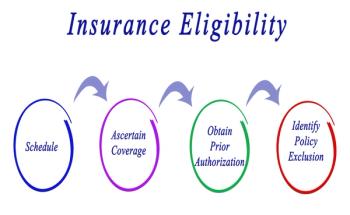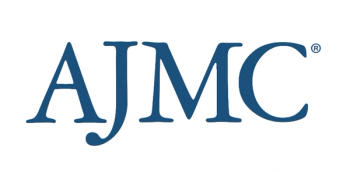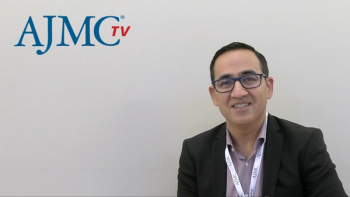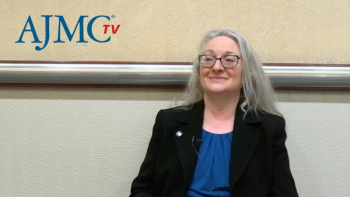
Health Care Cost
Latest News

Latest Videos

CME Content
More News

As health care moves toward a value-based payment model, the pharmacy benefit is going in the opposite direction, one that places unit cost over clinical appropriateness.

Patients with Medicare coverage and whose incomes fall between 100% and 400% or less of the federal poverty level may find themselves in a tricky financial situation concerning their ability to pay the Medicare Part A hospital deductible.

Prior authorizations (PA) have been the subject of much scrutiny as of late through research demonstrating subsequent limited access to care in the aftermath of PA denials from use of artificial intelligence (AI) technologies.

Cost avoidance varied by clinical setting, with the largest savings occurring in hematology clinics ($73,773), followed by rheumatology ($45,330) and pediatric gastrointestinal/irritable bowel syndrome ($16,519).

Stuart Staggs, vice president of transformation and shared services at McKesson, explained that oncology practices in the Enhancing Oncology Model (EOM) have a tough job driving down costs when drug costs make up a larger portion of the total cost of care.

The Center on Health Equity & Access focuses on addressing disparities in health care access, exploring innovative solutions, policies, and research to improve health equity across diverse populations.

As National Breast Cancer Awareness Month comes to a close, here are 5 things to note about the prospect of preventive mastectomies for individuals with a high-risk of developing breast cancer.

The Medicaid budget survey for fiscal years 2024 and 2025 revealed state predictions are expecting a decline in Medicaid enrollment and an increase in spending next year due to the end of pandemic-era policies and federal funding.

At the regional Institute for Value-Based Medicine® event in Boston, Vinayak Venkataraman, MD, medical oncologist at Dana-Farber Cancer Institute and Harvard Medical School, was a panelist for the discussion, “Recent Advancements in Identifying Predictive Biomarkers for Sarcomas."

Of the 10% of women contacted for this survey who said that they or their partner had ever sought fertility assistance, only 7% were able to get the necessary care; cost was cited as the top reason for not being able to access fertility services.

Medicaid expansion is associated with improved care and increased survival rates for patients with certain breast cancers, but future studies should focus on whether Medicaid expansion mitigates the disparities between Black and non-White patients.

Medicaid, Medicare, and private insurance programs all showed significant variability in expenditures based on social and nonclinical factors.

The comparative effectiveness study found that the addition of selexipag (Uptravi) to double oral therapy (DOT) reduced the risk of patients being hospitalized or having their disease progress.

Among near-poor Black and Hispanic individuals, Medicare Advantage was associated with increased vision care and some, although not uniform, reductions in access disparities vs traditional Medicare.

Groundbreaking proposal to expand contraception coverage under the ACA marks the most significant update in over 10 years.

This article explores late-life relocations in patients with dementia, hospital stays, and their implications for health care policy, geriatric care, and future research priorities.

Investigators said the unique features of chimeric antigen receptor (CAR) T-cell therapy may warrant novel approaches to cost-effectiveness analysis.

The Wellth smartphone app significantly increased medication adherence and lowered unnecessary health care utilization and costs over 9 months among Medicaid beneficiaries who were self-managing chronic conditions.

The Center on Health Equity & Access focuses on addressing disparities in health care access, exploring innovative solutions, policies, and research to improve health equity across diverse populations.

Navdeep Tangri, MD, PhD, FRCP, University of Manitoba, speaks to the value of population health strategies in clinical approaches to care delivery for patients with chronic kidney disease (CKD).

Posters at AMCP Nexus analyzed the burden of flares on patients with atopic dermatitis (AD) and the impact initiating ruxolitinib cream had on use of other therapies.

Co-pay accumulators and maximizers are 2 programs that insurers have started implementing to help them redirect financial assistance from the patient, said Kimberly Westrich, MA, chief strategy officer, National Pharmaceutical Council.

A lot of attention has been on the drug price negotiation aspects of the Inflation Reduction Act (IRA), but the implementation of out-of-pocket smoothing is something to keep an eye on, said Adam Colborn, JD, of AMCP.

Artificial intelligence can revolutionize drug discovery by expediting development, reducing costs, and improving treatment options, but addressing its limitations is crucial for future success.

Miriam Godwin, CMMI, National Kidney Foundation, touches on the gaps in kidney care that public policy can address, as well as the importance of thinking about the long-term benefits of value-based care.





















































